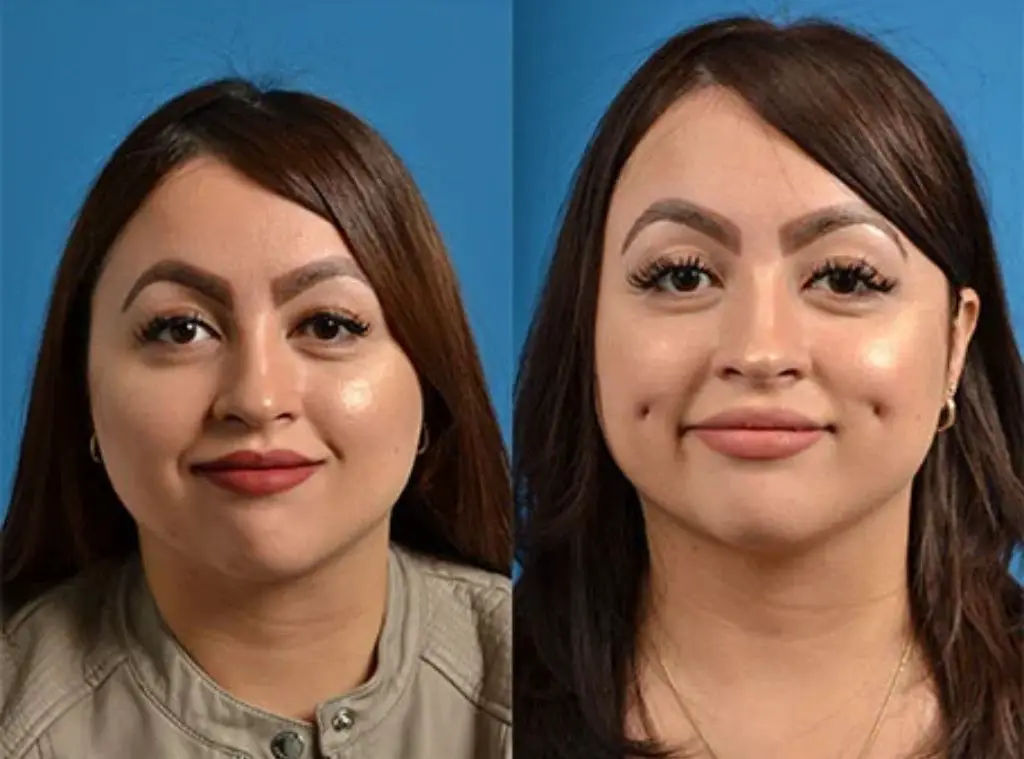Have you ever wondered how many types of dimples can get found in humans? If yes, we are dishing out all the information about this skin indentation.
Dimples are noticeable because they can make people more attractive when they smile. It often appears like a hollow point formed by skin muscles. In popular culture, they get linked to beauty, youthful appearance, and a great smile.
However, they get referred to as a birth defect since the cheeks do not necessarily need to have dimples. Hence, not everyone has dimples despite how cute they look. Genetics contribute to their occurrence, but they exist as a muscular variation.
You can have dimples your whole life, while sometimes they may not be present in infancy but develops later. Additionally, for some people, dimples may only become visible in adulthood. On the other hand, dimples may be present in childhood but disappear in adulthood.
There is so much to wrap one’s head around when it comes to the types of dimples. Read on to find everything you need to know about this confusing indent of the skin.
What are Skin Dimples?
Indentation found naturally occurring on the skin get referred to as dimples. They can also be called gelasin (formed from the Latin word gelasinus linked to the Ancient Greek word gelansinos). This flesh indentation, especially on the cheeks, has gotten referred to as good luck charms, innocence, and other good attributes.
In some cultures, the mother deliberately molds the cheeks and lower back to form dimples. So, whether dimples can be a hereditary trait is still up for debate due to the irregularities in their appearance. They often have different unique shapes and depths, depending on the bones.
This occurrence gets more common for cheek dimples, where the form of a person’s face determines how the dimples look.
Types of Dimples
Dimples occur in several places of the body, the most common being the cheeks. While they occur, they take different shapes; hence you may not find two looking the same. Sometimes even when found on one cheek, they may be non-existent on the other. However, the face can have four spots to form a dimple around the mouth and lips. Below are some of the types of dimples you can spot easily.
1. Cheek Dimples

Also called Fovea buccalis, it is visible when you smile by the contraction of the zygomaticus major muscle. As the skin moves around this facial muscle, it shows a dent called dimples. In most cases, they become prominent as an infant develops, but many desire dimples because it’s gotten regarded as attractive features.
Cheek dimples are either bilateral, occurring on both cheeks, or unilateral, appearing just on the side. Additionally, you can judge the intensity of a person’s facial expression with dimples.
2. Back Dimples

If you’ve noticed two dents on your lower back, they are called back dimples on other people. This location also becomes called Venus, the lower spine or Fossa lumbales laterales. When the fibrous chord, a short ligament, attaches itself to the crest of the hip bone, the skin tissues under the bone form dimples. It appears as a depression on the two sides of the spine.
For some people, stimulating the back dimples gives a pleasurable feeling that aids their sexual encounters. In recent times, piercings have gotten used to adorn this spot to make it more appealing when flashed. You can reach out to a professional piercing salon if you fancy it to discuss your options and how they will suit you.
3. Chin Dimples

This dimple type occurs when a space forms between the jawbones’ midline. The chin gets its shaping by the fusion of two lower jawbones. When both bones do not fuse properly, it creates a dent called a dimple. It also becomes called Fovea mentalis, a cleft of the chin. This chin defect got reported as more common in Europeans in a study. This doesn’t mean you cannot find it in other parts of the world. The study only backs that cleft chin is more likely an inherited trait.
4. Butt Cheek Dimples
If depressions become visible on your butt cheeks, they may be dimples or Gluteal dimples. They occur as a result of fat and cellulite deposits under the skin of the buttocks. This makes the upper skin layer unsmooth and sometimes dented enough to form dimples. Cellulite may be present due to hormones, poor posture, or more commonly hereditary. This means, for some people, it may get passed from parents to children.
5. Elbow Dimples

A dent sometimes forms on the elbows, and it is not usually permanent. These dimple-like points are often caused by injury or strains of the elbows, making the joints swell. When this happens, a dent gets formed on the elbow sides. You should have a doctor check your elbows if you notice elbow dimples, so you’re sure it is nothing serious.
6. Unicorn Dimple
On rare occasions, a dimple forms on the mouth’s side corner called Fovea inferior angle oris. This unique type of dimples gets tagged a unicorn because of the similarity in their occurrence. Although these dimpling spots are rare, they may be genetic and passed down from parents to children.
What Forms Cheeks Dimples
Our facial expressions get controlled by muscles, such as the rise in the mouth when you smile or frown. The zygomaticus major is the star muscle that makes the indentation appear. The zygomaticus major does not connect with mouth corners for a dimple to occur.
Under normal circumstances, it should start from the cheekbone and instead separates the muscles in bundles into two. One will relate to the skin of the upper and the other under the mouth corner. When this happens, a space gets left in the middle of the two muscles called the double as you move your face, courtesy of the zygomaticus major muscle, a dimple forms on the space.
People that do not have a dimple lack this split between the two forces. That’s because the zygomaticus major muscle extends from the zygomaticus bone down to the nook of their mouth. They do not have any health implications but only show individual differences and the variations of the body.
How Does genetics Relate to Dimple?
In genetics, from birth, you inherit genes from your parents; some are dominant, while others are recessive. Dominant traits will most likely be displayed when passed down to you, and cheek dimples fall under such characteristics. Although a few research back the classification of dimples as a dominant gene, it is common for people to give birth to children without the traits.
The claims can be regarded as invalid when the children do not have dimples like their parents. Since the occurrence of dimples is irregular, as a dominant trait, they might be regarded as inherited.
Can you get Cheek Dimples Artificially?
Since society has tagged most types of dimples as attractive, more and more people desire them in both males and females. You can stop being envious of this who flaunt their dimples through the following ways.
1. Dimple Machine
Back in the 90s, the dimpling machine got invented by Isabella Gilbert, which became a mechanical method to get dimples without surgery. At that time, it became the buzz with newspapers reporting the procedure in print. The machine had an area where you take close to the head that fits the face.
This introduced a spring with two small knobs to your cheeks that press into it to reveal fine dimple sets. It caused significant discomfort, and the result may not be instant. But the promise to give new types of dimples kept people going at it for hours. This face-shaping device became an instant hit at the time, with everyone wanting to look attractive with fine dimples.
2. Dimpleplasty
There is no limit to what can get done these days, so goes for dimples. If you are not born with dimples, you can get it with a dimpleplasty, a plastic surgery that usually costs anywhere from $1,500. The indentation gets created with an incision on the spot between the two muscles that should separate.
To get the perfect location, you will get asked to make your cheek hollow by sucking in the air. This enables the surgeon to remove some muscle tissue, and it gets stitched by passing through some skin in the open area. When the skin heals back, the stitch dissolves on its own a dimple gets formed like an overlaying attachment of the skin.
This procedure does not cause any injury mark or stitch on your face. The surgery usually lasts about 30 minutes to 1 hour, and soon within a few weeks, you’ll be flaunting your new look. Before you opt for this procedure, set up a consultation with your doctor to discuss the entire process and possible risks. You also get to know if the surgery will be beneficial to give you the best results. If not, you’re better off the way you look.

3. V-spot Treatment for Lower Back Dimples
Dimples on the back can make one appear sexy when rocking a bikini or low-rise pants. It can enhance the beauty of one’s waistline, which is why most people want them these days. Not to worry, you too can get dimples on the lower back, a plastic surgery procedure.
The v-spot treatment, the keyword V-meaning Venus, helps put indentations on the back. It got popularised after Amanda Wong-Powell, a plastic surgeon based in London, came up with this treatment procedure. You can thank social media, celebs, and influencers for the popularity of this dimpling process.
If you choose to go for such a procedure, be ready to splurge up to $6000. That’s because the treatment often starts with a liposuction procedure to remove fat deposits under the skin of the lower spine. This enables the surgeon to get the exact spots on each backside, which become sculpted to form the indentations. When done correctly, the results should look as good as the natural Venus dimples.
What can Make Different Types of Dimples go Away?
Dimples that got inherited will most likely never go away; they only become less prominent with changes to your body. These drastic changes may include weight loss, weight gain, and aging. In some cases, a child may have dimples in infancy and disappear with time.
Fat cheeks can cause a dent to show up when the skin moves, as babies suckle or smile. As they grow older and lose the baby fat, the dimples go away with the fat. Additionally, your dimples can go away with exercise, which means drastic weight loss. When you add diets, your dimples may not survive the change in your body.
Conclusion
Dimples make a person smile notable, hence why they get classified as beauty marks. Not everyone has them, but you find many people and celebrities spotting different types of dimples. If you desire to get dimples, surgical procedures are available to get them.
You don’t have to undergo such procedures, as dimples do not make one beautiful. Regardless of how society portrays it to make one attractive, love your body no matter what.
You may also like to read:
– The ultimate guide to getting to know yourself and your body
–Top 10 Black Fashion Bloggers You Should Follow In 2022
–15 super chic fisherman sandals that’ll get you in the mood for summer ASAP






















About Me
Fashion & Beauty Enthusiast
Hi, I'm Fanti. I'm a fashion, beauty, and lifestyle enthusiast, and the ultimate curves queen. Here, I share beauty, fashion, and lifestyle tips to teach, inspire, and give confidence to all women.